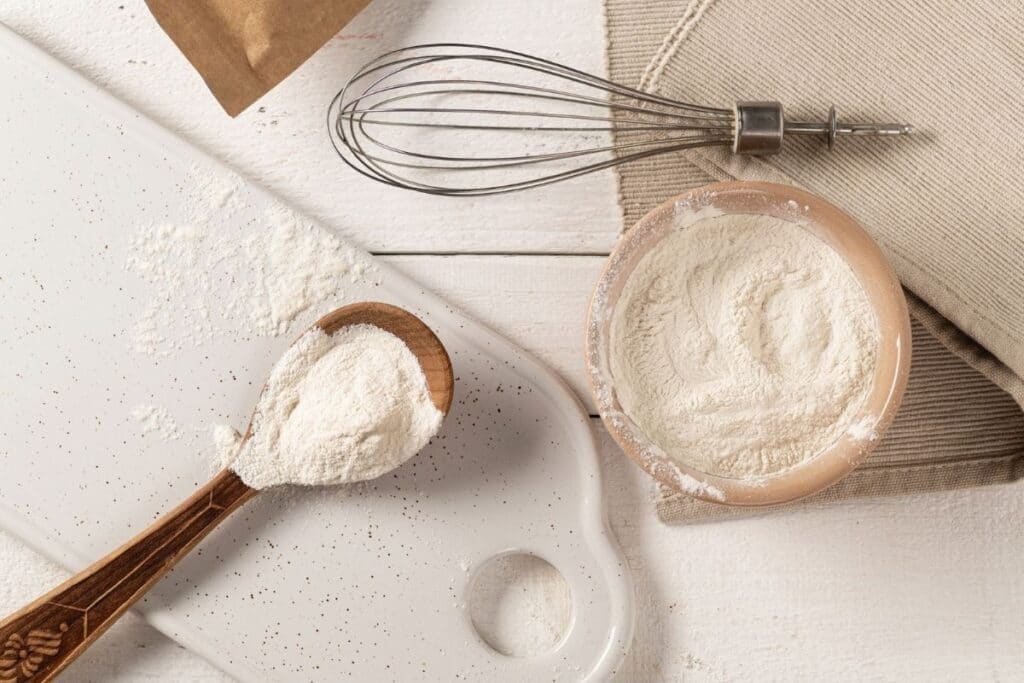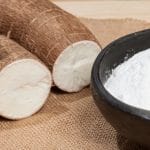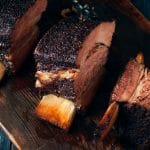In a nutshell, psyllium husk, cornstarch, unflavored gelatin, agar-agar, guar gum, etc., are excellent alternatives to xanthan gum. Each substitute has specific applications and proportions for use.
If you’re doing some gluten-free baking, you’re very likely to see xanthan gum in the recipe’s ingredient list. Despite its name, it is not gum. It’s a powder. Whether or not it is new to you, you might be surprised to discover how many foods actually contain this strangely-named product.
If you’re not sure where to get it, don’t worry, we have a list of substitutes for xanthan gum to ensure your gluten-free baking goes ahead as planned. Before we discover the best xanthan gum substitute, let’s take a better look at what it is.
What is Xanthan Gum?
Xanthan gum is made using the fermentation of simple sugars. It is used in very small quantities as a thickener or stabilizer in foods and has commercial uses in cosmetics, toothpaste, and even in the oil industry.
It is so popular in gluten-free baking because it brings a stickiness to the batter that is missing due to the types of gluten free flours used. Gluten is what gives dough the ability to stretch and hold air when rising, resulting in a soft, airy, and fluffy baked item.
If you’ve ever tried doing a straight swap of gluten-free flour in a recipe that uses regular flour without changing anything else, you likely ended up with an extremely flat and dense product.
Xanthan gum to the rescue! The characteristic it brings to the batter allows more air to be trapped during baking and lightens an otherwise very dense cake, bread, or muffin.
Besides its use in gluten-free baking, it is also a common ingredient in salad dressings, ice cream, dairy, meat and poultry items, sauces, as well as egg replacement products. It offers stabilizing, thickening, and binding properties.
Another beneficial feature of the ingredient is that it does not influence the flavor or color of the other ingredients in the batter. This means you can enhance the texture without compromising any other characteristics of your dish.
Best Xanthan Gum Substitutes
1. Psyllium Husk
Psyllium husks are available in both an unrefined form and a refined powder. Some people prefer the whole, unrefined husks. However, if you can only get psyllium husk powder, it will do the trick.
Note that psyllium husks are best used in bread baking and are not suitable as a replacement in cupcakes, muffins, cakes, and pastry.
The husks act as a binder, giving the bread dough flexibility and elasticity. Not only does this allow you to form the dough into rolls, bagels, and shapes as opposed to having to use a bread tin, but it also traps moisture, keeping the bread from drying out too quickly.
Psyllium husk can be used as a gel or in its dry form. By making a gel first, you will speed up the bread-making process. When using dry husks, you need to give them time to hydrate within the batter mixture for up to 45 minutes. However, adding the already hydrated husks allows you to skip this waiting time.
To make the gel, mix the husks in a 1:10 ratio (minimum) with water and let it sit to form a thick gloop. Very importantly, you need to measure both by weight. Therefore, if you use 5 grams of husks, you need 50 to 100 grams of water.
Best for: Gluten-free breads and gluten-free yeast breads
Substitute quantity: Replace xanthan gum in a 2:1 ratio with psyllium husks. Therefore, if your recipe requires 1 teaspoon of xanthan gum, use 2 teaspoons of husk. Once you have measured the husks, add the water to form your gel.
2. Cornstarch
Cornstarch has a fine powdery texture similar to that of xanthan gum. It is made from the interior of the corn kernel, processed to remove the fiber, and ground into a powder.
It is naturally gluten-free, so it won’t be suitable as a straight wheat flour substitute in baking since the result will be incredibly dense. However, it can be combined with other flours and has excellent thickening properties.
Corn starch has a neutral taste in small amounts, but too much of it can cause your sauce or stew to have an uncooked starch flavor. If you are extremely sensitive to gluten, check the packaging for certified gluten-free labeling to ensure it is not processed in a factory that also manufactures gluten goods.
Best for: Thickening sauces, gravies, soups, and stews.
Substitute quantity: Replace in equal amounts.
See more: Substitute for Cornstarch
3. Unflavored Gelatin
Gelatin is an animal product, so it won’t be suitable for vegetarian baking. If this is not an issue for you, it can be a handy replacement and is easy to obtain.
When combined with water, a gel forms, which traps moisture. This results in a stretchy dough ideal for making gluten-free pizza crusts. It is also a good substitute for muffin and bread batters since it helps to thicken and bind the dough.
Best for: Gluten-free pizza crust, bread, crackers, and muffins
Substitute quantity: Use twice the amount of gelatin as a xanthan gum replacement.
4. Agar-Agar
Agar-agar is the vegan alternative to gelatin. It is made from red algae and acts the same way unflavored gelatin does in thickening and holding moisture. As with gelatin, it is sold in flakes, sheets, or powder form. Agar-agar may provide a slightly firmer texture than xanthan gum.
Best for: Gluten-free pizza crust, bread, crackers, and muffins
Substitute quantity: To use agar as an alternative, you need to do a little prep. Use it in equal amounts as a replacement. Add the agar-agar to room temperature water and then heat it on low heat for 3 to 5 minutes until completely dissolved.
The standard recommendation is to use 4 tablespoons of water for every 1 tablespoon of flakes. If you are using powder, use 4 tablespoons of water for 1 teaspoon of powder.
5. Guar Gum
Guar gum is a white powder that acts as a thickener and binder. It is made from guar beans and has an intense thickening capability. In small amounts, this improves the texture of gluten-free baked goods as well as their shelf life.
The best way to use this as a substitute is to blend the powder with the oil in your recipe and then add this mixture to the rest of the liquid ingredients.
Best for: Cakes, biscuits, muffins, as well as thickening sauces.
Substitute quantity: For baked items, use a little more guar gum, substituting it in a 3:2 ratio.
6. Whisked Egg Whites
Egg whites are probably the easiest substitute for xanthan gum and something you likely already have in the fridge.
When whisked, they hold air well and therefore serve as a raising agent and binding or setting agent. They are not a good choice for kneaded bread, as kneading the dough will be counterproductive to incorporating and maintaining pockets of air.
Best for: Cakes, waffles, and pancakes.
Substitute quantity: Replace 1 whisked egg white for every 4.5g or tablespoon of xanthan gum required.
7. Flax Meal
Ground flax seeds or flax meal add some good nutritional and digestive benefits to your baked goods in addition to their binding properties. You can purchase the seeds and grind them yourself or purchase them pre-ground. Unlike some other substitutes, ground flax seed has a brown color and gritty texture.
Even though you need to mix the powder in water before adding it to your batter, keep in mind that it can affect the color of light batters and may give it a slightly nutty taste and grainy texture.
Best for: Cookies, muffins, and batters.
Substitute quantity: Replace in equal amounts. Once you have measured the ground flaxseed, mix it with 2 parts of hot water and let it cool before adding to the rest of the ingredients. This will activate the binding properties.
8. Soaked Chia Seeds
As with flax, chia seeds offer the bonus of bringing nutritional value to your baking. They need to be soaked to form a gel-like substance and may require you to leave your bread or muffins in the oven 10 to 15 minutes longer.
Whole seeds bring a crunchiness and nutty taste, but you can grind the seeds if you prefer a smoother texture. Either way, keep in mind that they are dark in color and will form little black specks in the batter.
Best for: Cookies, muffins, and bread
Substitute quantity: Use chia seeds as a replacement in equal quantities. Once you have measured out your seeds, soak them in water (2 parts water to 1 part seeds) and stir them or let them soak until a gooey gel forms.
FAQs
Yes, the gel is produced with bacterial fermentation and then dried into a powder form. Neither the process nor ingredients include any animal products.
Yes, it is completely gluten-free, which is why it is so popular in gluten-free baking recipes.
No. The two ingredients are used for different purposes, and baking powder is acidic, which reacts differently to liquid and heat.
Omitting xanthan gum from a recipe, especially in baking or sauces, might result in a slightly different texture. Xanthan gum is a common thickening and stabilizing agent, so its absence could lead to a less viscous or cohesive final product.
Conclusion
With so many new gluten-free recipes and products available, there is no excuse for gluten-intolerant individuals to miss out on any freshly baked goodness. Choose your substitute according to the required properties in your recipe since not all ingredients work equally well in all types of baking.
Xanthan gum substitutes are all pretty neutral in taste, which means they’re suitable for sweet and savory dishes. Waffles, bread, cake, cupcake, muffins, and cookies, nothing is off-limits anymore.
*image by MyroslavaY/depositphotos









